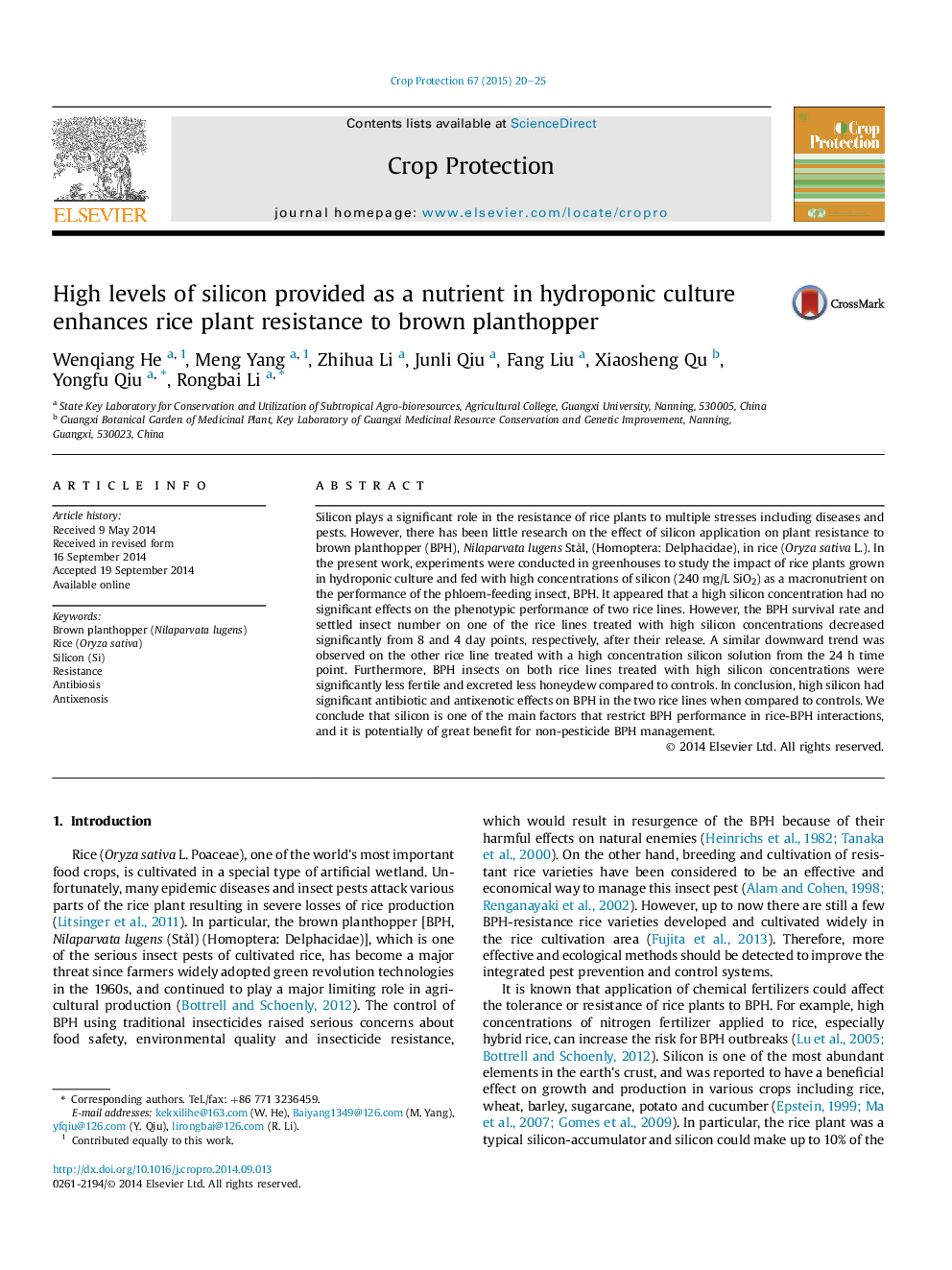| Article ID | Journal | Published Year | Pages | File Type |
|---|---|---|---|---|
| 6373525 | Crop Protection | 2015 | 6 Pages |
Abstract
Silicon plays a significant role in the resistance of rice plants to multiple stresses including diseases and pests. However, there has been little research on the effect of silicon application on plant resistance to brown planthopper (BPH), Nilaparvata lugens Stål, (Homoptera: Delphacidae), in rice (Oryza sativa L.). In the present work, experiments were conducted in greenhouses to study the impact of rice plants grown in hydroponic culture and fed with high concentrations of silicon (240 mg/L SiO2) as a macronutrient on the performance of the phloem-feeding insect, BPH. It appeared that a high silicon concentration had no significant effects on the phenotypic performance of two rice lines. However, the BPH survival rate and settled insect number on one of the rice lines treated with high silicon concentrations decreased significantly from 8 and 4 day points, respectively, after their release. A similar downward trend was observed on the other rice line treated with a high concentration silicon solution from the 24 h time point. Furthermore, BPH insects on both rice lines treated with high silicon concentrations were significantly less fertile and excreted less honeydew compared to controls. In conclusion, high silicon had significant antibiotic and antixenotic effects on BPH in the two rice lines when compared to controls. We conclude that silicon is one of the main factors that restrict BPH performance in rice-BPH interactions, and it is potentially of great benefit for non-pesticide BPH management.
Related Topics
Life Sciences
Agricultural and Biological Sciences
Agronomy and Crop Science
Authors
Wenqiang He, Meng Yang, Zhihua Li, Junli Qiu, Fang Liu, Xiaosheng Qu, Yongfu Qiu, Rongbai Li,
